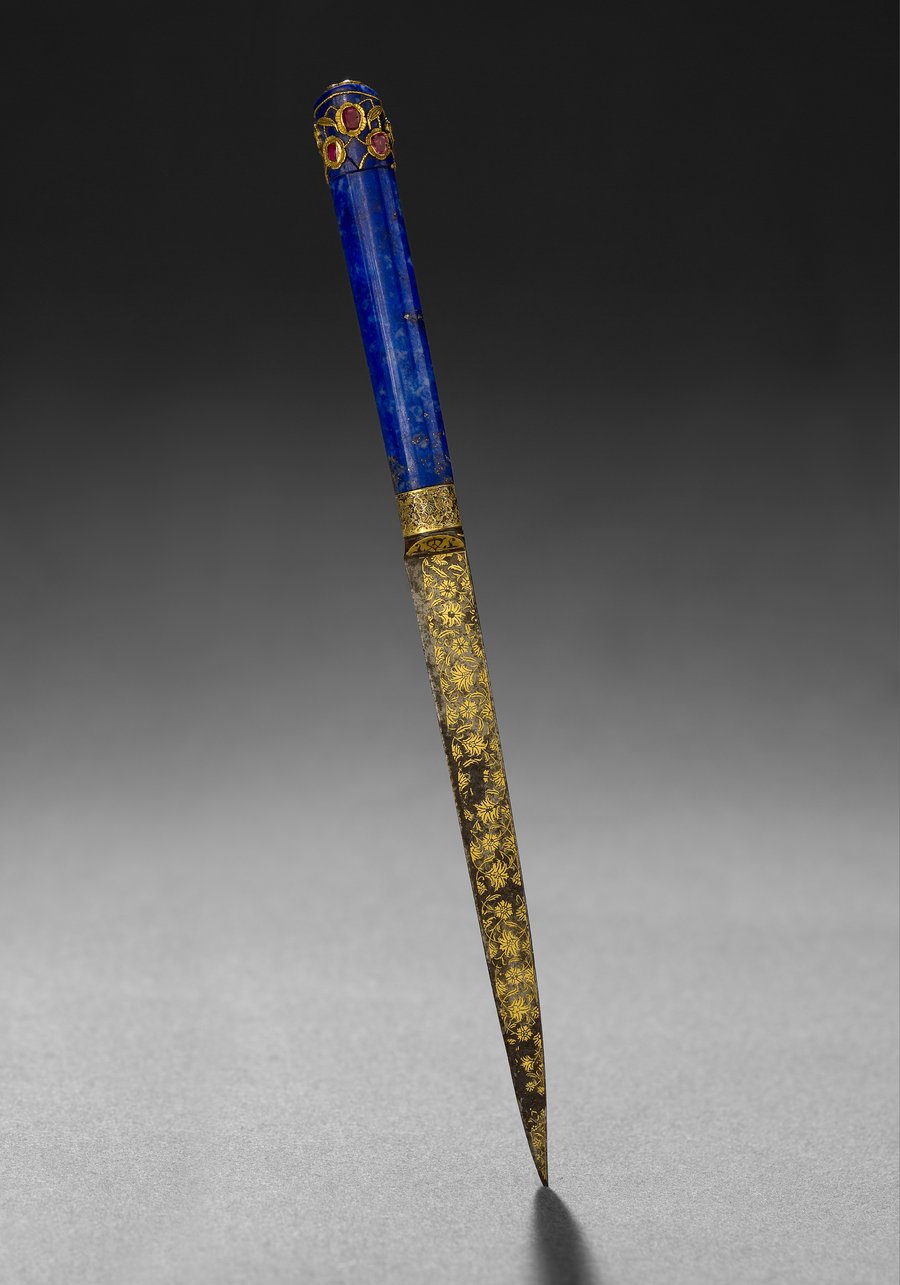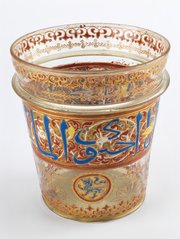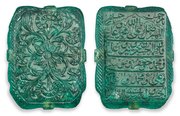
Ottoman Dagger
Museum of Islamic Art
- Title:
- Ottoman Dagger
- Production place:
- Turkey
- Date:
- 1775 - 1825
- Period:
- Ottoman
- Title:
- Ottoman Dagger
- Production place:
- Turkey
- Date:
- 1775 - 1825
- Period:
- Ottoman
- Material:
- Steel, Gold, Lapis lazuli, Ruby, Enamel
- Technique:
- Forging, Engraving, Inlaying, Gem setting, Cutting, Chiseling, Enamelling, Polishing
- Dimensions:
- 27.1 × 2 × 2.7
This fine Ottoman dagger (bıçaq) presents a steel blade decorated with fine koftgari work, and a jewelled lapis lazuli hilt. The straight blade is inlaid in gold on one side with a design of knotted cloud bands and foliage, and on the other with a band of scrolling lotus heads. The spine of the blade is decorated en suite with an undulating floral stem. The cylindrical ferrule, which secures the blade to its hilt, is inlaid with a niello patterning of delicate lotus scrolls. The hilt, carved in cylindrical form from lapis lazuli, is decorated at its pommel with inlaid table-cut rubies set within fine gold wire, delicately tooled with petals and leaves. Both the technique for stone setting and the gold tooling are characteristic of imperial 10th century AH/16th century CE Ottoman craftsmanship, and might be the work of court jeweller Mehmed ibn 'Imad, who served both Sultan Murad III (952-1004 AH/1546-95 CE) and Ahmed I (998-1026 AH/1590-1617 CE). The scrolling leaves, rosettes and chinoiserie cloud bands decorating the tapered blade can also be found on contemporaneous album drawings and manuscript illuminations of the period. This fine dagger was most likely made for a courtly dignitary, who would have kept it tucked into his waist sash or belt as a symbol of status.



